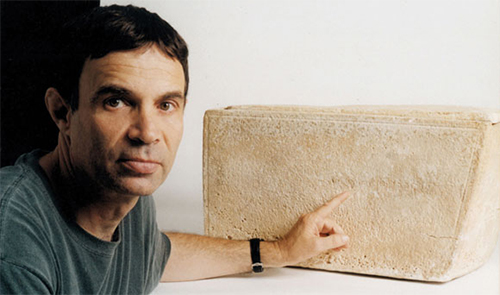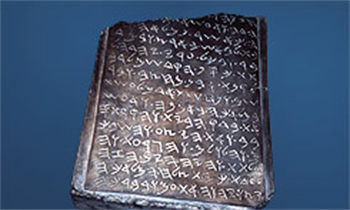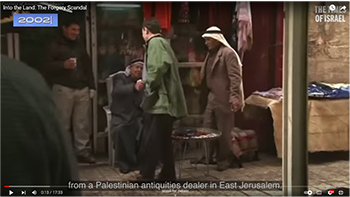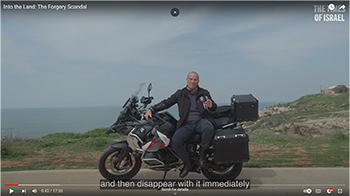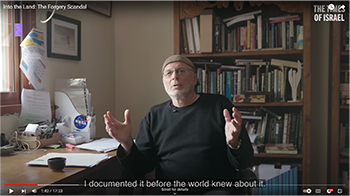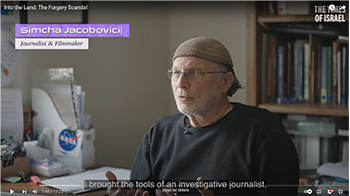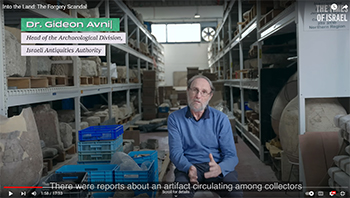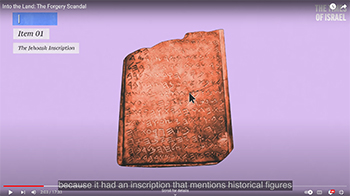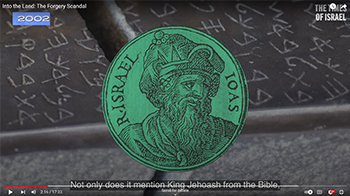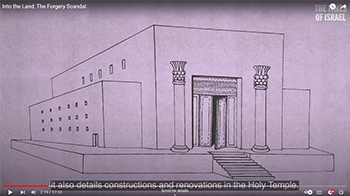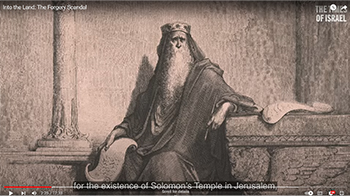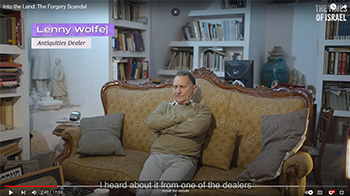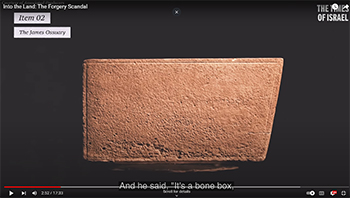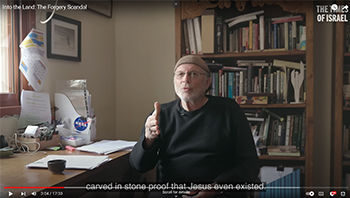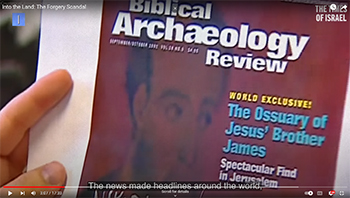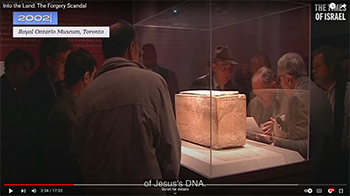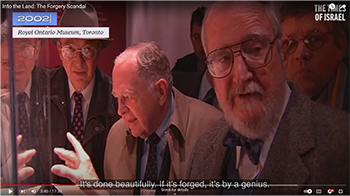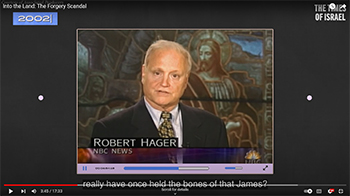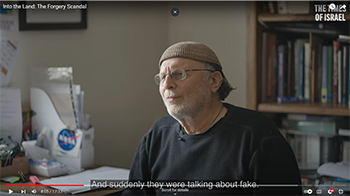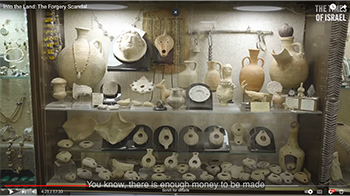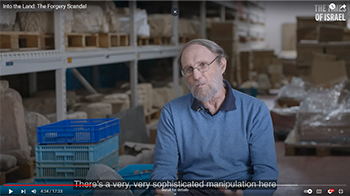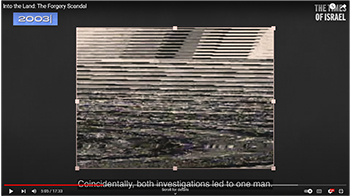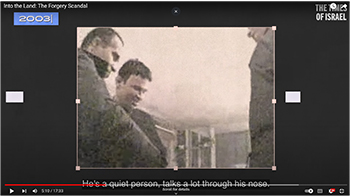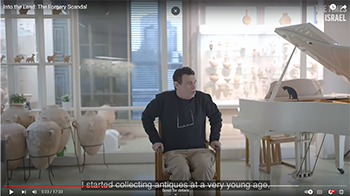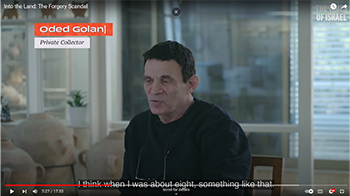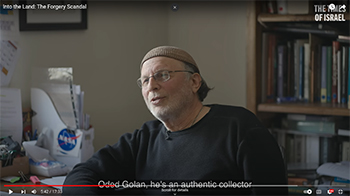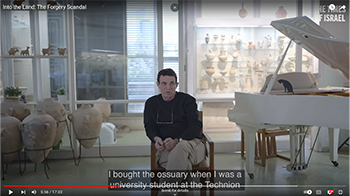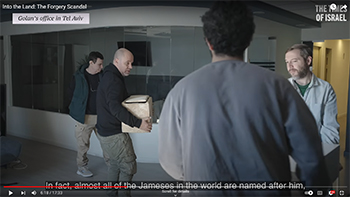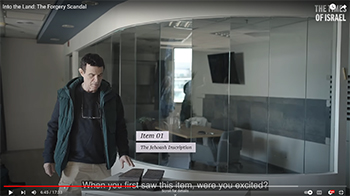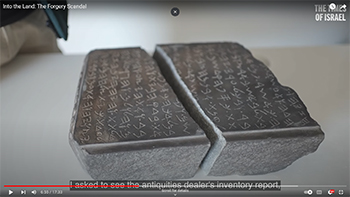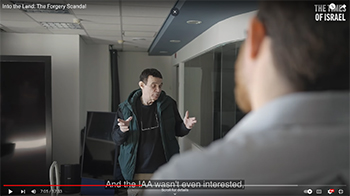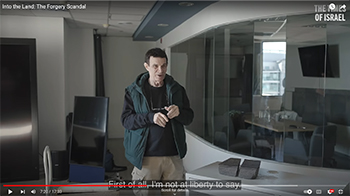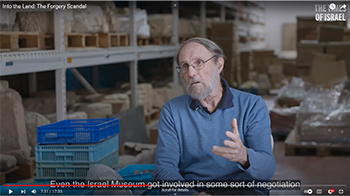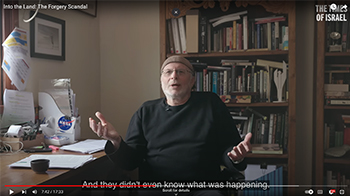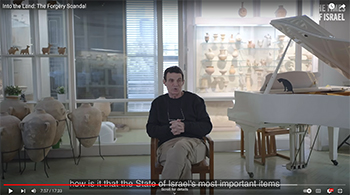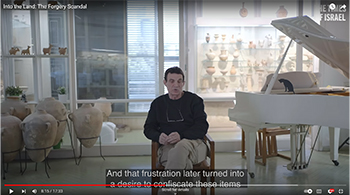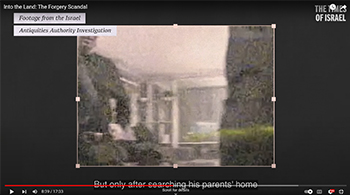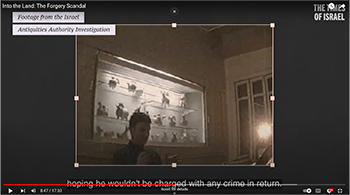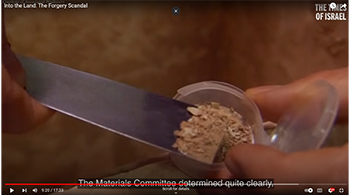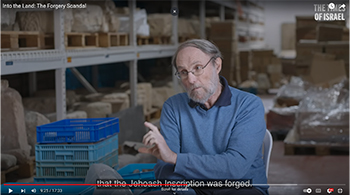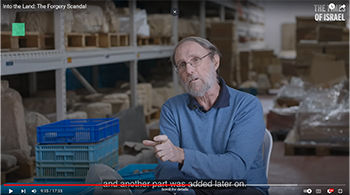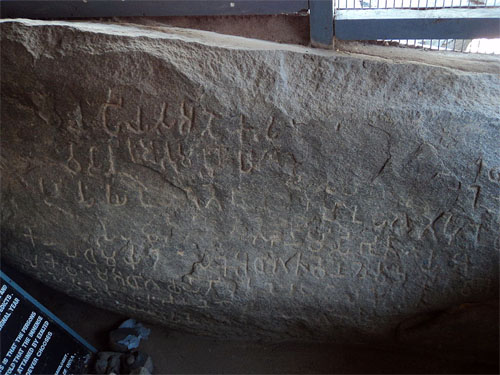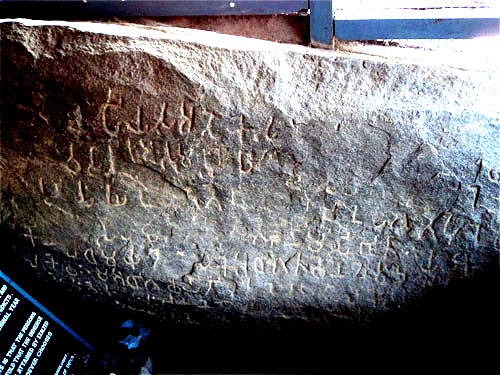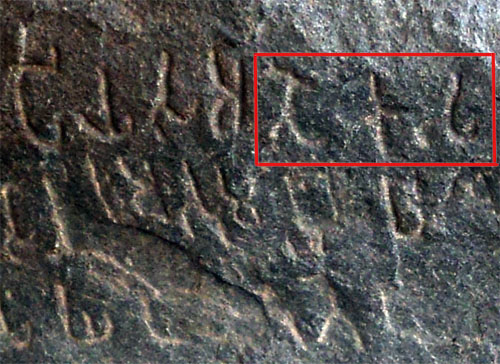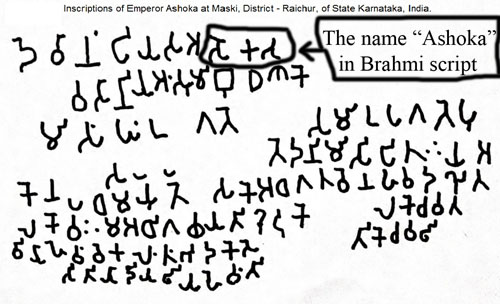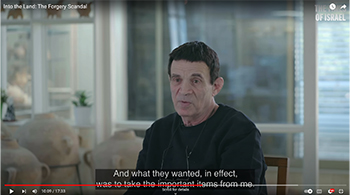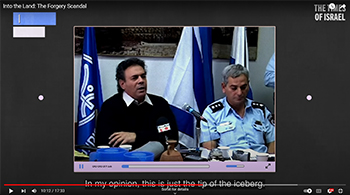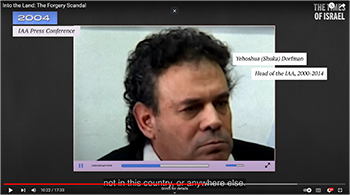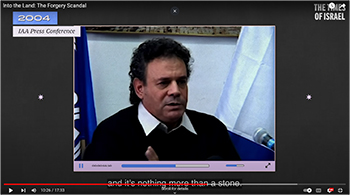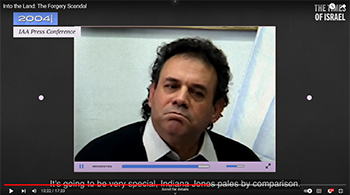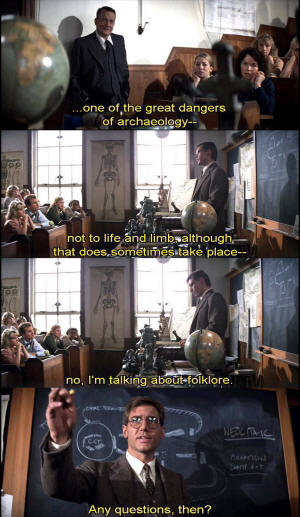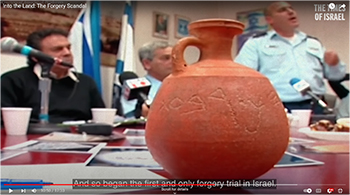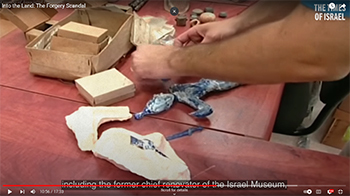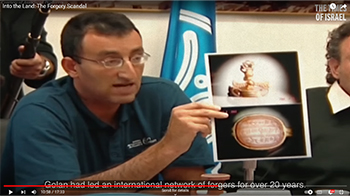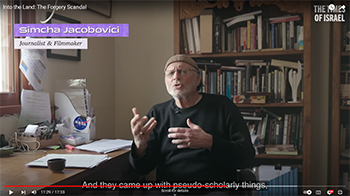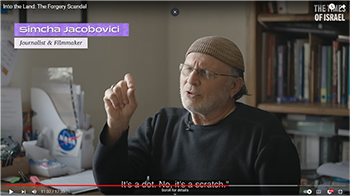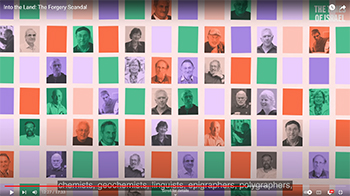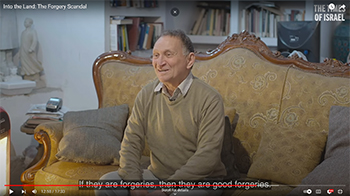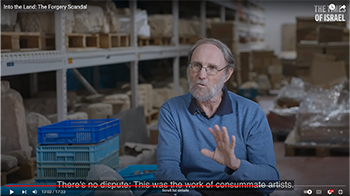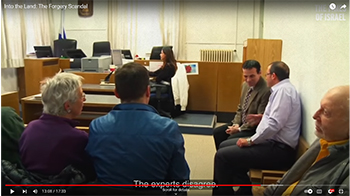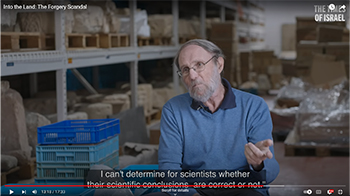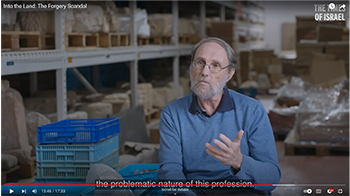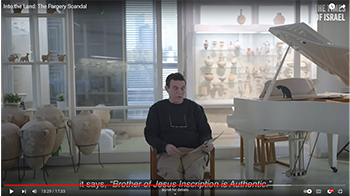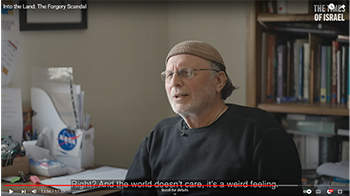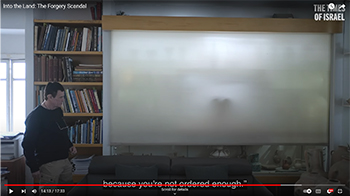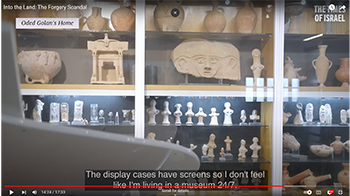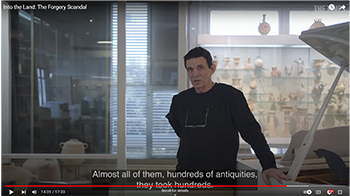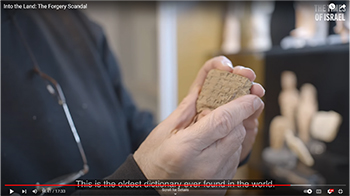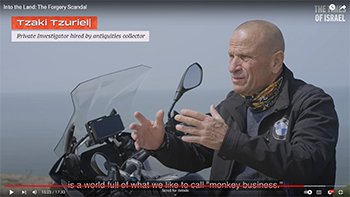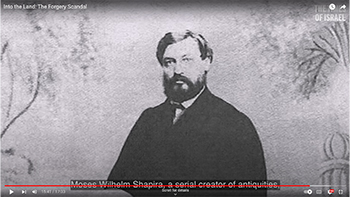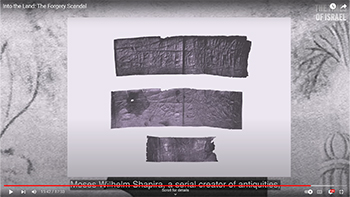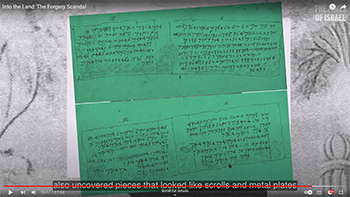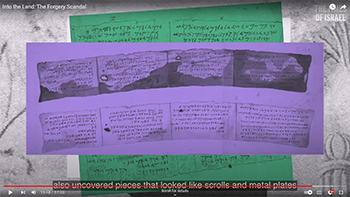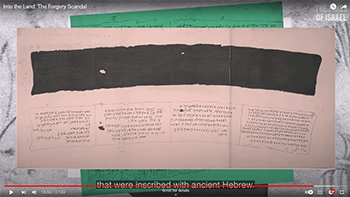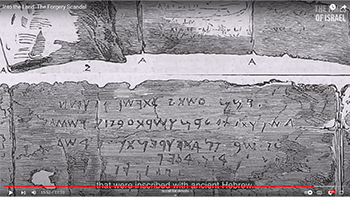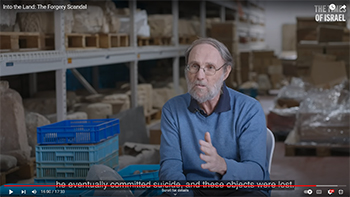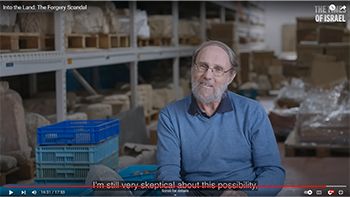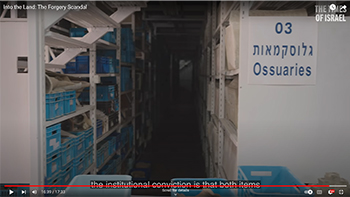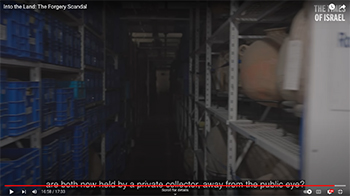by Wikipedia
Accessed: 11/19/22
For other people named Diogenes, see Diogenes (disambiguation).
Diogenes Laërtius (/daɪˌɒdʒɪniːz leɪˈɜːrʃiəs/ dy-OJ-in-eez lay-UR-shee-əs;[1] Greek: Διογένης Λαέρτιος, Laertios; [fl. 3rd century AD) was a biographer of the Greek philosophers. Nothing is definitively known about his life, but his surviving Lives and Opinions of Eminent Philosophers is a principal source for the history of ancient Greek philosophy. His reputation is controversial among scholars because he often repeats information from his sources without critically evaluating it. He also frequently focuses on trivial or insignificant details of his subjects' lives while ignoring important details of their philosophical teachings and he sometimes fails to distinguish between earlier and later teachings of specific philosophical schools. However, unlike many other ancient secondary sources, Diogenes Laërtius generally reports philosophical teachings without attempting to reinterpret or expand on them, which means his accounts are often closer to the primary sources. Due to the loss of so many of the primary sources on which Diogenes relied, his work has become the foremost surviving source on the history of Greek philosophy.
Life
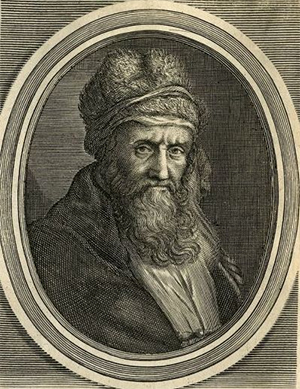
17th-century engraving
Laërtius must have lived after Sextus Empiricus (c. 200), whom he mentions, and before Stephanus of Byzantium and Sopater of Apamea (c. 500), who quote him. His work makes no mention of Neoplatonism, even though it is addressed to a woman who was "an enthusiastic Platonist".[2] Hence he is assumed to have flourished in the first half of the 3rd century, during the reign of Alexander Severus (222–235) and his successors.[3]
The precise form of his name is uncertain. The ancient manuscripts invariably refer to a "Laertius Diogenes", and this form of the name is repeated by Sopater[4] and the Suda.[5] The modern form "Diogenes Laertius" is much rarer, used by Stephanus of Byzantium,[6] and in a lemma to the Greek Anthology.[7] He is also referred to as "Laertes"[8] or simply "Diogenes".[9]
The origin of the name "Laertius" is also uncertain. Stephanus of Byzantium refers to him as "Διογένης ὁ Λαερτιεύς" (Diogenes ho Laertieus),[10] implying that he was the native of some town, perhaps the Laerte in Caria (or another Laerte in Cilicia). Another suggestion is that one of his ancestors had for a patron a member of the Roman family of the Laërtii.[11] The prevailing modern theory is that "Laertius" is a nickname (derived from the Homeric epithet Diogenes Laertiade, used in addressing Odysseus) used to distinguish him from the many other people called Diogenes in the ancient world.[12]
His home town is unknown (at best uncertain, even according to a hypothesis that Laertius refers to his origin). A disputed passage in his writings has been used to suggest that it was Nicaea in Bithynia.[13][14]
It has been suggested that Diogenes was an Epicurean or a Pyrrhonist. He passionately defends Epicurus[15] in Book 10, which is of high quality and contains three long letters attributed to Epicurus explaining Epicurean doctrines.[16] He is impartial to all schools, in the manner of the Pyrrhonists, and he carries the succession of Pyrrhonism further than that of the other schools. At one point, he even seems to refer to the Pyrrhonists as "our school."[13] On the other hand, most of these points can be explained by the way he uncritically copies from his sources. It is by no means certain that he adhered to any school, and he is usually more attentive to biographical details.[17]
In addition to the Lives, Diogenes refers to another work that he had written in verse on famous men, in various metres, which he called Epigrammata or Pammetros (Πάμμετρος).[3]
Lives and Opinions of Eminent Philosophers
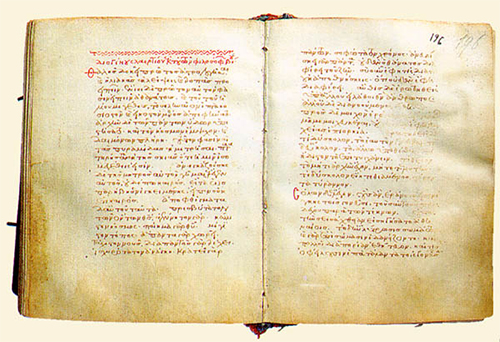
Dionysiou monastery, codex 90, a 13th-century manuscript containing selections from Herodotus, Plutarch and (shown here) Diogenes Laertius
The work by which he is known, Lives and Opinions of Eminent Philosophers (Greek: Βίοι καὶ γνῶμαι τῶν ἐν φιλοσοφίᾳ εὐδοκιμησάντων; Latin: Vitae Philosophorum), was written in Greek and professes to give an account of the lives and sayings of the Greek philosophers.
Although it is at best an uncritical and unphilosophical compilation, its value, as giving us an insight into the private lives of the Greek sages, led Montaigne to write that he wished that instead of one Laërtius there had been a dozen.[18] On the other hand, modern scholars have advised that we treat Diogenes' testimonia with care, especially when he fails to cite his sources: "Diogenes has acquired an importance out of all proportion to his merits because the loss of many primary sources and of the earlier secondary compilations has accidentally left him the chief continuous source for the history of Greek philosophy".[19]
Organization of the work
Diogenes divides his subjects into two "schools" which he describes as the Ionian/Ionic and the Italian/Italic; the division is somewhat dubious and appears to be drawn from the lost doxography of Sotion. The biographies of the "Ionian school" begin with Anaximander and end with Clitomachus, Theophrastus and Chrysippus; the "Italian" begins with Pythagoras and ends with Epicurus. The Socratic school, with its various branches, is classed with the Ionic; while the Eleatics and Pyrrhonists are treated under the Italic. He also includes his own poetic verse, albeit pedestrian, about the philosophers he discusses.
Books 1–7: Ionian Philosophy
Book 1: The Seven Sages
Thales, Solon, Chilon, Pittacus, Bias, Cleobulus, Periander, Anacharsis, Myson, Epimenides, Pherecydes
Book 2: Socrates, with predecessors and followers
Anaximander, Anaximenes, Anaxagoras, Archelaus, Socrates, Xenophon, Aeschines, Aristippus, Phaedo, Euclides, Stilpo, Crito, Simon, Glaucon, Simmias, Cebes, Menedemus of Eretria
Book 3: Plato
Plato
Book 4: The Academy
Speusippus, Xenocrates, Polemo, Crates of Athens, Crantor, Arcesilaus, Bion, Lacydes, Carneades, Clitomachus
Book 5: The Peripatetics
Aristotle, Theophrastus, Strato, Lyco, Demetrius, Heraclides
Book 6: The Cynics
Antisthenes, Diogenes of Sinope, Monimus, Onesicritus, Crates of Thebes, Metrocles, Hipparchia, Menippus, Menedemus
Book 7: The Stoics
Zeno of Citium, Aristo, Herillus, Dionysius, Cleanthes, Sphaerus, Chrysippus
Books 8–10: Italian Philosophy
Book 8: Pythagoreans
Pythagoras, Empedocles, Epicharmus, Archytas, Alcmaeon, Hippasus, Philolaus, Eudoxus
Book 9: (Eleatics, Atomists, Pyrrhonists)
Heraclitus, Xenophanes, Parmenides, Melissus, Zeno of Elea, Leucippus, Democritus, Protagoras, Diogenes of Apollonia, Anaxarchus, Pyrrho, Timon
Book 10: Epicurus
Epicurus
The work contains incidental remarks on many other philosophers, and there are useful accounts concerning Hegesias, Anniceris, and Theodorus (Cyrenaics);[20] Persaeus (Stoic);[21] and Metrodorus and Hermarchus (Epicureans).[22] Book VII is incomplete and breaks off during the life of Chrysippus. From a table of contents in one of the manuscripts (manuscript P), this book is known to have continued with Zeno of Tarsus, Diogenes, Apollodorus, Boethus, Mnesarchus, Mnasagoras, Nestor, Basilides, Dardanus, Antipater, Heraclides, Sosigenes, Panaetius, Hecato, Posidonius, Athenodorus, another Athenodorus, Antipater, Arius, and Cornutus. The whole of Book X is devoted to Epicurus, and contains three long letters written by Epicurus, which explain Epicurean doctrines.
His chief authorities were Favorinus and Diocles of Magnesia, but his work also draws (either directly or indirectly) on books by Antisthenes of Rhodes, Alexander Polyhistor, and Demetrius of Magnesia, as well as works by Hippobotus, Aristippus, Panaetius, Apollodorus of Athens, Sosicrates, Satyrus, Sotion, Neanthes, Hermippus, Antigonus, Heraclides, Hieronymus, and Pamphila.[23][24]
Oldest extant manuscripts
There are many extant manuscripts of the Lives, although none of them are especially old, and they all descend from a common ancestor, because they all lack the end of Book VII.[25] The three most useful manuscripts are known as B, P, and F. Manuscript B (Codex Borbonicus) dates from the 12th century, and is in the National Library of Naples.[a] Manuscript P (Paris) is dated to the 11th/12th century, and is in the Bibliothèque nationale de France.[27] Manuscript F (Florence) is dated to the 13th century, and is in the Laurentian Library.[27] The titles for the individual biographies used in modern editions are absent from these earliest manuscripts, however they can be found inserted into the blank spaces and margins of manuscript P by a later hand.[27]
There seem to have been some early Latin translations, but they no longer survive. A 10th-century work entitled Tractatus de dictis philosophorum shows some knowledge of Diogenes.[28] Henry Aristippus, in the 12th century, is known to have translated at least some of the work into Latin, and in the 14th century an unknown author made use of a Latin translation for his De vita et moribus philosophorum[28] (attributed erroneously to Walter Burley).
Printed editions
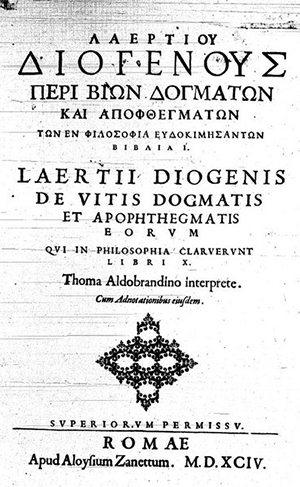
Title page of an edition in Greek and Latin, 1594
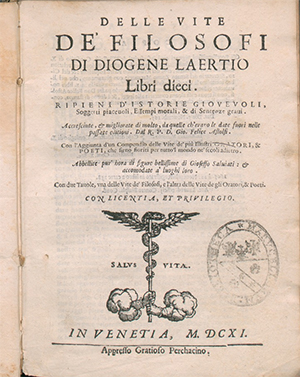
1611 Italian edition
The first printed editions were Latin translations. The first, Laertii Diogenis Vitae et sententiae eorum qui in philosophia probati fuerunt (Romae: Giorgo Lauer, 1472), printed the translation of Ambrogio Traversari (whose manuscript presentation copy to Cosimo de' Medici was dated February 8, 1433[29]) and was edited by Elio Francesco Marchese.[30] The Greek text of the lives of Aristotle and Theophrastus appeared in the third volume of the Aldine Aristotle in 1497. The first edition of the whole Greek text was that published by Hieronymus Froben in 1533.[31] The Greek/Latin edition of 1692 by Marcus Meibomius divided each of the ten books into paragraphs of equal length, and progressively numbered them, providing the system still in use today.[27]
The first critical edition of the entire text, by H.S. Long in the Oxford Classical Texts, was not produced until 1964;[25] this edition was superseded by Miroslav Marcovich's Teubner edition, published between 1999 and 2002. A new edition, by Tiziano Dorandi, was published by Cambridge University Press in 2013.[32]
English translations
Thomas Stanley's 1656 History of Philosophy adapts the format and content of Laertius' work into English, but Stanley compiled his book from a number of classical biographies of philosophers.[33] The first complete English translation was a late 17th-century translation by ten different persons.[34] A better translation was made by Charles Duke Yonge (1853),[35] but although this was more literal, it still contained many inaccuracies.[36] The next translation was by Robert Drew Hicks (1925) for the Loeb Classical Library,[37] although it is slightly bowdlerized. A new translation by Pamela Mensch was published by Oxford University Press in 2018.[38]
Legacy and assessment
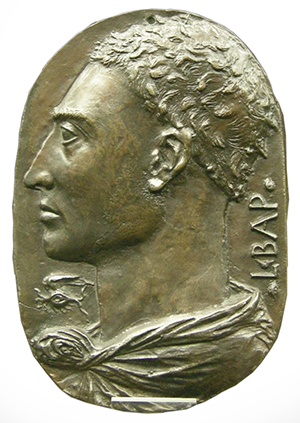
The Italian Renaissance scholar, painter, philosopher, and architect Leon Battista Alberti (1404–1472) modeled his own autobiography on Diogenes Laërtius's Life of Thales.[39]
Henricus Aristippus, the archdeacon of Catania, produced a Latin translation of Diogenes Laertius's book in southern Italy in the late 1150s, which has since been lost or destroyed.[39]
Henry Aristippus of Calabria (born in Santa Severina in 1105–10; died in Palermo in 1162), sometimes known as Enericus or Henricus Aristippus, was a religious scholar and the archdeacon of Catania (from c. 1155) and later chief familiaris of the triumvirate of familiares who replaced the admiral Maio of Bari as chief functionaries of the Kingdom of Sicily in 1161.
While the historian of Norman Sicily, John Julius Norwich, believes him to have probably been of Norman extraction despite his Greek surname, Donald Matthew considers it self-evident, based on both his name and occupations, that he was Greek. He was first and foremost a scholar and, even if Greek, he was an adherent of the Latin church.
Aristippus was an envoy to Constantinople (1158-1160) when he received from the emperor Manuel I Comnenus a Greek copy of Ptolemy's Almagest. A student of the Schola Medica Salernitana tracked down Aristippus and his copy on Mount Etna (observing an eruption) and proceeded to give a Latin translation. Though this was the first translation of the Almagest into Latin, it was not as influential as a later translation into Latin made by Gerard of Cremona from the Arabic. The original manuscript is probably in the Biblioteca Marciana in Venice.
Aristippus himself produced the first Latin translation of Plato's Phaedo (1160) and Meno and the fourth book of Aristotle's Meteorologica. He also translated Gregory of Nazianzus at the request of William I of Sicily.
In 1161, William appointed three familiares—Aristippus, Sylvester of Marsico, and the Bishop Palmer—to replace the assassinated Maio. In 1162, Aristippus was suspected of disloyalty by the king and imprisoned. He died probably soon after in that very year. He may have helped himself to some of the royal concubines during the rebellion of 1161.
-- Henry Aristippus, by Wikipedia
Geremia da Montagnone used this translation as a source for his Compedium moralium notabilium (circa 1310) and an anonymous Italian author used it as a source for work entitled Liber de vita et moribus philosophorum (written c. 1317–1320), which reached international popularity in the Late Middle Ages.[39] The monk Ambrogio Traversari (1386–1439) produced another Latin translation in Florence between 1424 and 1433, for which far better records have survived.[39] The Italian Renaissance scholar, painter, philosopher, and architect Leon Battista Alberti (1404–1472) borrowed from Traversari's translation of the Lives and Opinions of Eminent Philosophers in Book 2 of his Libri della famiglia[39] and modeled his own autobiography on Diogenes Laërtius's Life of Thales.[39]
Diogenes Laërtius's work has had a complicated reception in modern times.[40] The value of his Lives and Opinions of Eminent Philosophers as an insight into the private lives of the Greek sages led the French Renaissance philosopher Michel de Montaigne (1533–1592) to exclaim that he wished that, instead of one Laërtius, there had been a dozen.[41] Georg Wilhelm Friedrich Hegel (1770–1831) criticized Diogenes Laërtius for his lack of philosophical talent and categorized his work as nothing more than a compilation of previous writers' opinions.[39] Nonetheless, he admitted that Diogenes Laërtius's compilation was an important one given the information that it contained.[39] Hermann Usener (1834–1905) deplored Diogenes Laërtius as a "complete ass" (asinus germanus) in his Epicurea (1887).[39] Werner Jaeger (1888–1961) damned him as "that great ignoramus".[42] In the late twentieth and early twenty-first centuries, however, scholars have managed to partially redeem Diogenes Laertius's reputation as a writer by reading his book in a Hellenistic literary context.[40]
Nonetheless, modern scholars treat Diogenes's testimonia with caution, especially when he fails to cite his sources. Herbert S. Long warns: "Diogenes has acquired an importance out of all proportion to his merits because the loss of many primary sources and of the earlier secondary compilations has accidentally left him the chief continuous source for the history of Greek philosophy."[19] Robert M. Strozier offers a somewhat more positive assessment of Diogenes Laertius's reliability, noting that many other ancient writers attempt to reinterpret and expand on the philosophical teachings they describe, something which Diogenes Laërtius rarely does.[43] Strozier concludes, "Diogenes Laertius is, when he does not conflate hundreds of years of distinctions, reliable simply because he is a less competent thinker than those on whom he writes, is less liable to re-formulate statements and arguments, and especially in the case of Epicurus, less liable to interfere with the texts he quotes. He does, however, simplify."[43]
Despite his importance to the history of western philosophy and the controversy surrounding him, according to Gian Mario Cao, Diogenes Laërtius has still not received adequate philological attention.[39] Both modern critical editions of his book, by H. S. Long (1964) and by M. Marcovich (1999) have received extensive criticism from scholars.[39]
He is criticized primarily for being overly concerned with superficial details of the philosophers' lives and lacking the intellectual capacity to explore their actual philosophical works with any penetration. However, according to statements of the 14th-century monk Walter Burley in his De vita et moribus philosophorum, the text of Diogenes seems to have been much fuller than that which we now possess.
Editions and translations
• Diogenis Laertii Vitae philosophorum edidit Miroslav Marcovich, Stuttgart-Lipsia, Teubner, 1999–2002. Bibliotheca scriptorum Graecorum et Romanorum Teubneriana, vol. 1: Books I–X ISBN 9783598713163; vol. 2: Excerpta Byzantina; v. 3: Indices by Hans Gärtner.
• Lives of Eminent Philosophers, edited by Tiziano Dorandi, Cambridge: Cambridge University Press, 2013 (Cambridge Classical Texts and Commentaries, vol. 50, new radically improved critical edition).
• Laërtius, Diogenes (1688). The lives, opinions, and remarkable sayings of the most famous ancient philosophers. The first volume written in Greek, by Diogenes Laertius ; made English by several hands. Vol. 1. Translated by Fetherstone, T.; White, Sam.; Smith, E.; Philips, J.; Kippax, R.; Baxter, William; M., R. (2 volumes ed.). London: Edward Brewster.
• Laërtius, Diogenes (1853). Lives and Opinions of Eminent Philosophers. Translated by Yonge, Charles Duke. London: G.H. Bohn.
• Translation by R.D. Hicks:
o "Index" . Lives of the Eminent Philosophers (Two volume ed.). Loeb Classical Library. 1925.
o Lives of Eminent Philosophers. Vol. I. Harvard University Press, Loeb Classical Library. 1925. ISBN 978-0-674-99203-0.
o Lives of Eminent Philosophers. Vol. II. Harvard University Press, Loeb Classical Library. 1925. ISBN 978-0-674-99204-7.
• Translations based on the critical edition by Tiziano Dorandi:
o Lives of Eminent Philosophers. Translated by Pamela Mensch. Oxford University Press. 2018. ISBN 978-0-19-086217-6.
o Lives of Eminent Philosophers. Translated by Stephen White. Cambidge University Press. 2020. ISBN 978-0-521-88335-1.
See also
• Mochus
Notes
1. The statement by Robert Hicks (1925) that "the scribe obviously knew no Greek",[26] was later rejected by Herbert Long. The more recent opinion of Tiziano Dorandi, however, is that the scribe had "little knowledge of Greek ... and limited himself to reproducing it in a mechanical way exactly as he managed to decipher it". A few years later an "anonymous corrector" with good knowledge of Greek rectified "many errors or readings that, rightly or wrongly, he considered erroneous" (Dorandi 2013, p. [page needed]).
1. "Diogenes Laërtius", The Columbia Electronic Encyclopedia, 2013
2. Laërtius 1925a, § 47.
3. Chisholm1911, p. 282.
4. Sopater, ap. Photius, Biblioth. 161
5. Suda, Tetralogia
6. Stephanus of Byzantium, Druidai
7. Lemma to Anthologia Palatina, vii. 95
8. Eustathius, on Iliad, M. 153
9. Stephanus of Byzantium, Enetoi
10. Stephanus of Byzantium, Cholleidai
11. Smith 1870, p. 1028.
12. Long 1972, p. xvi.
13. Laërtius 1925b, § 109. Specifically, Diogenes refers to "our Apollonides of Nicaea". This has been conjectured to mean either "my fellow-citizen" or "a Sceptic like myself".
14. Craig 1998, p. 86.
15. Laërtius 1925c, § 3–12.
16. Laërtius 1925c, § 34–135.
17. Long 1972, pp. xvii–xviii.
18. Montaigne, Essays II.10 "Of Books" Archived 2009-02-14 at the Wayback Machine.
19. Long 1972, p. xix.
20. Laërtius 1925b, § 93–104.
21. Laërtius 1925c, § 36.
22. Laërtius 1925d, § 22–26.
23. Friedrich Nietzsche, Gesammelte Werke, 1920, p. 363.
24. Long 1972, p. xxi.
25. Long 1972, p. xxv.
26. Hicks 1925, p. [page needed].
27. Dorandi 2013, p. [page needed].
28. Long 1972, p. xxvi.
29. de la Mare 1992, p. [page needed].
30. Tolomio 1993, pp. 154, ff.
31. Long 1972, p. xxiv.
32. "Diogenes Laertius: Lives of Eminent Philosophers". Cambridge University Press. Retrieved 14 March 2014.
33. Stanley, Thomas (1656). The History of Philosophy. London: J. Mosely and T. Dring.
34. Fetherstone et al 1688, Volume 1, Volume 2 (published 1696).
35. Yonge 1853.
36. Long 1972, p. xiii.
37. Laërtius 1925.
38. Lives of the Eminent Philosophers - Diogenes Laertius. Oxford University Press. 14 May 2018. ISBN 978-0-19-086217-6. Retrieved 22 May 2018.
39. Cao 2010, p. 271.
40. Cao 2010, pp. 271–272.
41. Montaigne, Essays II.10 "Of Books" Archived February 14, 2009, at the Wayback Machine.
42. Jaeger 1947, p. 330 n.2.
43. Strozier 1985, p. 15.
References
• Cao, Gian Mario (2010), "Diogenes Laertius", in Grafton, Anthony; Most, Glenn W.; Settis, Salvatore (eds.), The Classical Tradition, Cambridge, Massachusetts and London, England: The Belknap Press of Harvard University Press, pp. 271–272, ISBN 978-0-674-03572-0
• Dorandi, Tiziano, ed. (2013). "Introduction". Diogenes Laertius: Lives of Eminent Philosophers. Cambridge University Press. ISBN 978-0521886819.
• Craig, Edward, ed. (1998). "Diogenes Laertius (c. AD 300–50)". Routledge Encyclopedia of Philosophy. Vol. 4. p. 86.
• Laërtius, Diogenes (1925a). "Plato" . Lives of the Eminent Philosophers. Vol. 1:3. Translated by Hicks, Robert Drew (Two volume ed.). Loeb Classical Library.
• Laërtius, Diogenes (1925b). "Others: Timon" . Lives of the Eminent Philosophers. Vol. 2:9. Translated by Hicks, Robert Drew (Two volume ed.). Loeb Classical Library.
• Laërtius, Diogenes (1925c). "Epicurus" . Lives of the Eminent Philosophers. Vol. 2:10. Translated by Hicks, Robert Drew (Two volume ed.). Loeb Classical Library.
• Laërtius, Diogenes (1925). "Index" . Lives of the Eminent Philosophers. Translated by Hicks, Robert Drew (Two volume ed.). Loeb Classical Library.
• Laërtius, Diogenes (1925b). "Socrates, with predecessors and followers: Aristippus" . Lives of the Eminent Philosophers. Vol. 1:2. Translated by Hicks, Robert Drew (Two volume ed.). Loeb Classical Library. § 65–104.
• Laërtius, Diogenes (1925c). "The Stoics: Zeno" . Lives of the Eminent Philosophers. Vol. 2:7. Translated by Hicks, Robert Drew (Two volume ed.). Loeb Classical Library. § 1–160.
• Laërtius, Diogenes (1925d). "Epicurus" . Lives of the Eminent Philosophers. Vol. 2:10. Translated by Hicks, Robert Drew (Two volume ed.). Loeb Classical Library. § 1–154.
• Long, Herbert S. (1972). Introduction. Lives of Eminent Philosophers. By Laërtius, Diogenes. Vol. 1 (reprint ed.). Loeb Classical Library. p. xvi.
• Hicks, Robert Drew (1925). Introduction. Lives of the Eminent Philosophers. By Laërtius, Diogenes. Translated by Hicks, Robert Drew (reprint ed.). Loeb Classical Library.[clarification needed]
• Smith, William, ed. (1870). "Diogenes Laertius". Dictionary of Greek and Roman Biography and Mythology.
• de la Mare, Albinia Catherine (1992). "Cosimo and his Books". In Ames-Lewis, F. (ed.). Cosimo 'il Vecchio' de' Medici, 1389–1464. Oxford.
• Strozier, Robert M. (1985), Epicurus and Hellenistic Philosophy, Lanham, Maryland and London, England: University Press of America, ISBN 978-0-8191-4405-8
• Jaeger, Werner (1947). Paideia: The Ideals of Greek Culture. Vol. III. Translated by Highet, Gilbert. Oxford: Oxford University Press.
• Tolomio, Ilario (1993). "Editions of Diogenes Laertius in the Fifteenth to Seventeenth Centuries". In Santinello, G.; et al. (eds.). Models of the History of Philosophy. Vol. 1. Dordrecht: Kluwer. pp. 154, ff.
Further reading
• Barnes, Jonathan. 1992. "Diogenes Laertius IX 61–116: The Philosophy of Pyrrhonism." In Aufstieg und Niedergang der römischen Welt: Geschichte und Kultur Roms im Spiegel der neueren Forschung. Vol. 2: 36.5–6. Edited by Wolfgang Haase, 4241–4301. Berlin: W. de Gruyter.
• Barnes, Jonathan. 1986. "Nietzsche and Diogenes Laertius." Nietzsche-Studien 15:16–40.
• Dorandi, Tiziano. 2009. Laertiana: Capitoli sulla tradizione manoscritta e sulla storia del testo delle Vite dei filosofi di Diogene Laerzio. Berlin; New York: Walter de Gruyter.
• Eshleman, Kendra Joy. 2007. "Affection and Affiliation: Social Networks and Conversion to Philosophy." The Classical Journal 103.2: 129–140.
• Grau, Sergi. 2010. "How to Kill a Philosopher: The Narrating of Ancient Greek Philosophers' Deaths in Relation to the Living. Ancient Philosophy 30.2: 347-381
• Hägg, Tomas. 2012. The Art of Biography in Antiquity. Cambridge, UK: Cambridge Univ. Press.
• Kindstrand, Jan Frederik. 1986. "Diogenes Laertius and the Chreia Tradition." Elenchos 7:217–234.
• Long, Anthony A. 2006. "Diogenes Laertius, Life of Arcesilaus." In From Epicurus to Epictetus: Studies in Hellenistic and Roman Philosophy. Edited by Anthony A. Long, 96–114. Oxford: Oxford Univ. Press.
• Mansfeld, Jaap. 1986. "Diogenes Laertius on Stoic Philosophy." Elenchos 7: 295–382.
• Mejer, Jørgen. 1978. Diogenes Laertius and his Hellenistic Background. Wiesbaden: Steiner.
• Mejer, Jørgen. 1992. "Diogenes Laertius and the Transmission of Greek Philosophy." In Aufstieg und Niedergang der römischen Welt: Geschichte und Kultur Roms im Spiegel der neueren Forschung. Vol. 2: 36.5–6. Edited by Wolfgang Haase, 3556–3602. Berlin: W. de Gruyter.
• Morgan, Teresa J. 2013. "Encyclopaedias of Virtue?: Collections of Sayings and Stories About Wise Men in Greek." In Encyclopaedism from Antiquity to the Renaissance. Edited by Jason König and Greg Woolf, 108–128. Cambridge; New York: Cambridge University Press.
• Sassi, Maria Michela. 2011. Ionian Philosophy and Italic Philosophy: From Diogenes Laertius to Diels. In The Presocratics from the Latin Middle Ages to Hermann Diels. Edited by Oliver Primavesi and Katharina Luchner, 19–44. Stuttgart: Steiner.
• Sollenberger, Michael. 1992. The Lives of the Peripatetics: An Analysis of the Content and Structure of Diogenes Laertius’ “Vitae philosophorum” Book 5. In Aufstieg und Niedergang der römischen Welt: Geschichte und Kultur Roms im Spiegel der neueren Forschung. Vol. 2: 36.5–6. Edited by Wolfgang Haase, 3793–3879. Berlin: W. de Gruyter.
• Vogt, Katja Maria, ed. 2015. Pyrrhonian Skepticism in Diogenes Laertius. Tübingen, Germany: Mohr Siebeck.
• Warren, James. 2007. "Diogenes Laertius, Biographer of Philosophy." In Ordering Knowledge in the Roman Empire. Edited by Jason König and Tim Whitmars, 133–149. Cambridge; New York : Cambridge University Press.
Attribution:
• This article incorporates text from a publication now in the public domain: Chisholm, Hugh, ed. (1911). "Diogenes Laërtius". Encyclopædia Britannica. Vol. 8 (11th ed.). Cambridge University Press. p. 282.
External links
• Works by Diogenes Laertius at Perseus Digital Library
• Works by Diogenes Laertius in eBook form at Standard Ebooks
• Works by Diogenes Laertius at Project Gutenberg
• Works by or about Diogenes Laertius at Internet Archive
• Works by Diogenes Laertius at LibriVox (public domain audiobooks)
• Ancient Greek text of Diogenes's Lives
• Article on the Manuscript versions at the Tertullian Project
• A bibliography of the Lives and Opinions of Eminent Philosophers
• Libro de la vita de philosophi et delle loro elegantissime sentencie. Venice, Joannes Rubeus Vercellensis, 20 May 1489. From the Rare Book and Special Collections Division at the Library of Congress
• Digitized Manuscript of Diogenes Laertius' Vitae Philosophorum (Arundel MS 531) at the British Library website

